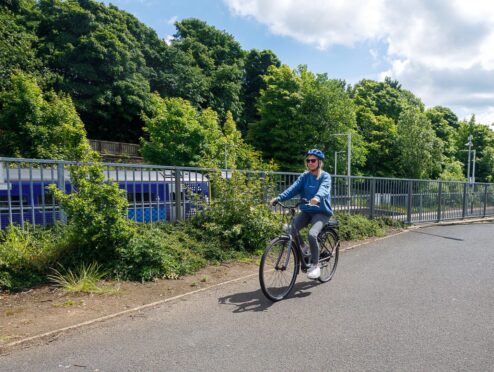Does diverting non-urgent patients away from A&E this winter hold the key to easing pressure on the NHS?
It’s no secret emergency departments across the country, including Fife, have regularly come under fire as weekly statistics lay bare their performance.
And latest figures reveal there are still high numbers of people waiting more than four and eight hours in Fife.
It comes as the Scottish Government launches a winter campaign to ask people to play their part in easing the pressure.
We asked NHS Fife why are so many people waiting such a long time? And if you need help, what are the options for you instead of A&E?
For the week ending November 6, statistics show Fife’s emergency department was close to the national average for seeing patients within four hours.
What do stats show?
During that week, the number of patients seen within four hours in Fife was 65.7%, with the national average 65.1%.
But figures also show that in Fife:
- 430 people waited over four hours
- 109 people waited over eight hours
- 31 people waited over 12 hours.
NHS Fife have also been issuing pleas through social media asking people to think twice before going if they don’t need urgent care.
And the Scottish Government also echoes that, asking people to play their part in easing the pressure with a new campaign.
So why are there still people waiting so long?
Unprecedented demand
Director of Acute Services at NHS Fife, Claire Dobson, explains the pressures on services are affecting the whole of the healthcare system.
Performance is reflective on the unprecedented demand they’ve seen over the course of this year so far.
And work is being carried out to improve patient flow through the hospital.
But, she adds, it’s true more patients are waiting to be assessed and either admitted or discharged.
“It remains the case those who are most unwell are prioritised to be assessed very quickly on arrival at the Emergency Department,” she explains.
“Patients are triaged to ensure those who require immediate intervention can receive this.”
She adds: “Regrettably, that means patients whose condition is less serious are currently likely to wait longer.
“That does not mean we are accepting of patients waiting longer.”
But those who have to wait are monitored and given good quality of care throughout their time in the emergency department, she says.
Where do I go if not A&E?
If it’s a life threatening emergency, you should phone 999 or go directly to A&E.
But the new campaign from the government makes it clear that if your condition isn’t life-threatening, there are other options for you to get help.
Phone NHS 24 on 111 if:
- You think you need to go to A&E but it’s not life threatening.
- You’re too ill to wait for your GP practice to open.
If you have:
- a cut
- a minor burn
- a sprain or strain
- think you have broken or fractured a bone
Visiting a Minor Injuries Unit can often be quicker than going to A&E. But phone NHS 24 on 111 will direct you.















Conversation